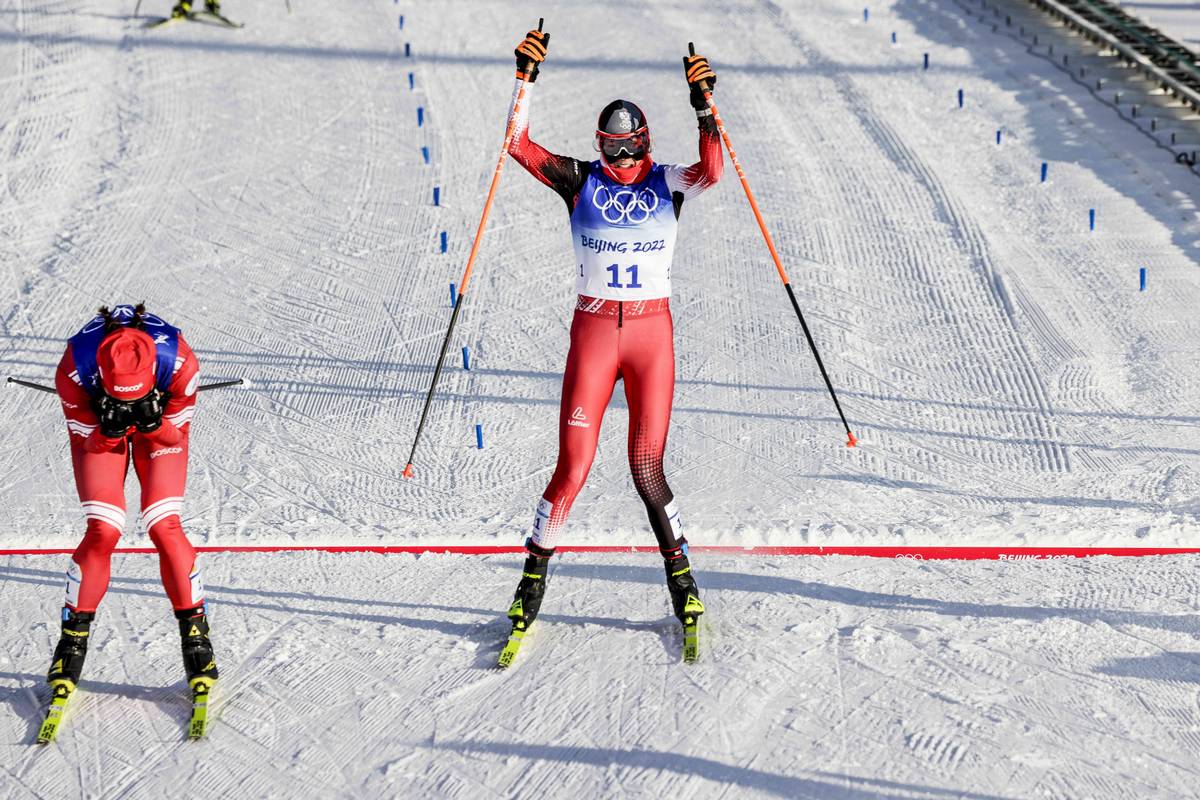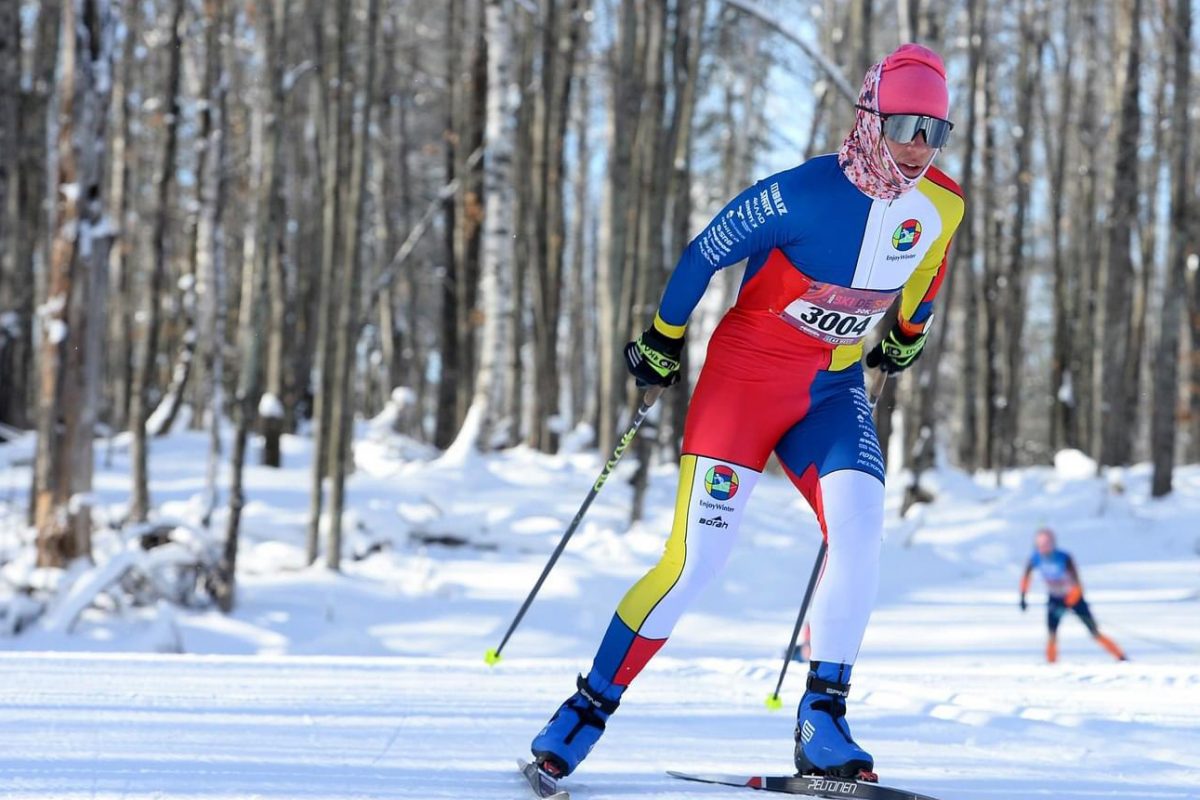Female American and Swedish cross-country skiers are pushing to race equal distances as men. But some of the sport’s star women remain unconvinced.
ZHIANGJIAKOU, CHINA — At the end of her first-ever competition at the Winter Olympics — a 15-kilometer effort that left her sprawled on the ground gasping for breath — Julia Kern contemplated the idea of racing twice as far.
“I personally like the shorter distances,” said Kern, a rising American star. But, she added: “I think equal time makes sense to me.”
Equity, however, remains an elusive target for athletes competing in the Olympic cross-country ski races here.
In opening competitions, on Saturday and Sunday, the women raced 15 kilometers, while the men raced 30. In relays later in the Games, men will ski legs of 10 kilometers while the women race half as far. And when men ski a 50-kilometer marathon as their last event, women will race 30.
A group of Americans, including the U.S. team’s biggest star, Jessie Diggins, has launched a campaign to change that.
“I think it’s really, really cool to see people who are really good at long distance have their shot, and we get very few chances,” Diggins said. “We train just as hard, just as much as the men. As I’m sure you can see when I cross the finish line, we give just as much in every single race. And so I think we should be afforded the same opportunities for a variety of distance.”

The sport’s leaders say discussions about closing that gender gap are happening at the international level. But there’s no time frame or firm commitment yet.
And while advocates say they’ve made progress on the U.S. domestic racing circuit, they stress that it’s hard to get traction without change at the top. That’s because athletes and coaches want to make sure that up-and-coming athletes are preparing themselves to race at the sport’s highest levels.
In the mean time, frustration is lingering.
“We wonder why women are paid, like, 75% of what men are paid,” said Molly Peters, a collegiate ski coach in Vermont who leads the group called Equal Distance. “I just think if women are going to be empowered and feel like they’re equal, the races should be the same.”
The world’s fastest women increasingly agree with Peters and Diggins, according to surveys by the International Ski Federation (FIS). But not all of them.

“I think it’s good like it is,” said Teresa Stadlober, the Austrian who won a bronze medal in Saturday’s Olympic opening event. “Men are stronger. They have other muscles than we girls.”
Therese Johaug of Norway, the winner of that race, also said the 15-kilometer distance — compared to 30 kilometers for men — “is good for us.” “Maybe we could go 20,” she added. “But 15 is also great for me.”
Peters acknowledged that the idea of equalizing distances isn’t universally popular among women, which she attributes to some athletes’ comfort with the status quo.
“You’re going to want to keep doing what you’re most successful at,” she said.
The differences have been baked into cross-country skiing for decades. And until recently, calls for equity haven’t gotten much traction.
At the Olympic level, there are discrepancies between men’s and women’s events in several other winter sports. Nordic combined lacks a women’s competition whatsoever.
But in the sports where women do compete, cross-country skiing has the most events with substantial differences between women and men.
Until recently, the FIS surveys showed that the majority of women on the elite-level World Cup circuit “didn’t see the need for change,” said Pierre Mignerey, the federation’s cross-country race director. Last year was the first time a narrow majority favored races at the same distance.
The FIS has tasked a working group with studying the idea.
But the process comes with tricky questions. Should women race longer distances? Or should the federation shorten men’s events? Meet in the middle? Or race slightly different distances that take men and women the same amount of time?
And what about races where the distances are part of the tradition, like the 50-kilometer and 30-kilometer events for men and women, respectively, held at the Holmenkollen in Oslo?
Those questions, in turn, intersect with an ongoing FIS debate about which race formats and distances are most appealing to the World Cup’s European-focused TV audience.
“You’ll occasionally hear, ‘well, it’s hard to find the TV time for the two genders to go 50 k,’’ said Matt Whitcomb, the U.S. team’s head coach. “Well, find it. Or shorten the men. Otherwise it’s a sexist system.”
Any changes to the race program must be proposed to FIS’s governing council by the 20 nations in the federation’s cross-country committee, Mignerey said in an interview. Which means, he added, that any decisions will likely be driven by the sport’s biggest players.
“Basically, if the Scandinavians in cross-country are convinced that it’s a good change, there is a big chance,” Mignerey said.
In Sweden, at least, several stars have weighed in against unequal race distances, with 22-year-old Frida Karlsson last year declaring the difference between the 15- and 30-kilometer skiathlons “almost a little offensive.”

“In soccer, ladies and gentlemen have 90 minutes, plus overtime. It is the same in most sports,” Swedish sprint star Linn Svahn told a news outlet in her country. “I see no reason why it should not be the same in cross-country skiing. It is a conservative tradition that we should race shorter than the boys.”
Norwegian men’s coach Eirik Myhr Nossum, in an interview, said his country is also open to a conversation about distances, and he called gender equality “a very important question.”
But, he added: “I’m not sure if having them race the same distances is the right way to say it’s gender equality. Gender quality is to be paid the same, and I think the situation in cross-country skiing is quite good.” (Men and women earn the same amount of prize money on the World Cup circuit.)
While FIS studies the issue, change is already happening at lower-level races.
Sweden ran equal distance races at a top-level domestic event last year.
In the U.S., organizers ran into a problem when they tried to schedule a 7.5-kilometer race for both men and women at a top-level SuperTour event last weekend: FIS rules say that men cannot score distance ranking points for races shorter than 10 kilometers. For women, the minimum is just five kilometers.

But other SuperTour events have been equal. And Peters has made progress in pushing regional races on the NCAA circuit in the same direction — though she’s still waiting for other coaches to agree on a change at the national championships.
Peters, who coaches the ski team at St. Michael’s College in Vermont, said it was “amazing” to watch the women on her own team race the same 20-kilometer event as the men for the first time ever this year — a step up from the 15 kilometers they used to race.
“It was so hard,” Peters said. “The women were like, ‘We did it! We raced the same distances and we feel so proud of ourselves. And there was so much talk.”
Nathaniel Herz
Nat Herz is an Alaska-based journalist who moonlights for FasterSkier as an occasional reporter and podcast host. He was FasterSkier's full-time reporter in 2010 and 2011.



